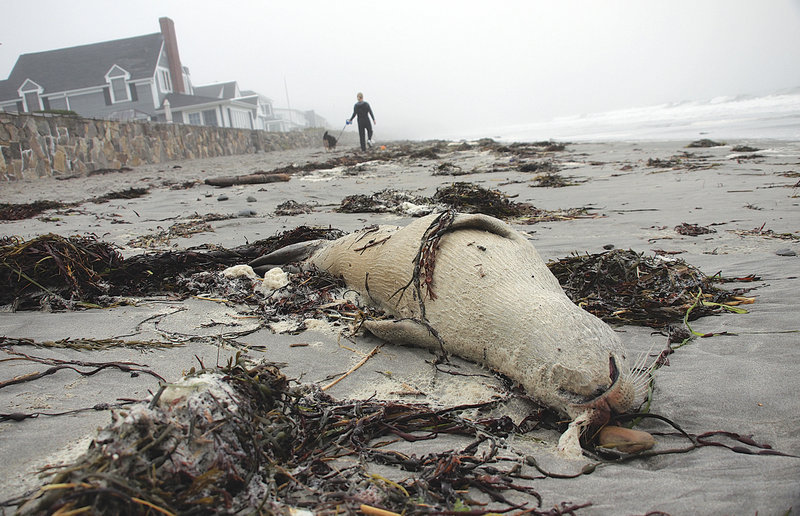BOSTON — Federal officials are stepping up an investigation into the deaths of 146 harbor seals along the New England coast since September after samples of five of them tested positive for the influenza A virus, authorities announced Friday.
The National Oceanic and Atmospheric Administration announced that the deaths have been declared an unusual event, enabling the agency to pour more resources into the probe. The declaration came after consultations with a panel of international experts established under the Marine Mammal Protection Act to monitor and investigate sea animal health concerns.
The 146 seals generally were less than a year old and had healthy appearances. They were found in Maine, New Hampshire and northern Massachusetts.
The NOAA said in a statement the deaths were more than three times the average number of strandings that typically occur this time of year.
Although tissues from five seals examined by the New England Aquarium tested positive for the influenza A virus, test results for six other viral pathogens and biotoxins were negative, the agency said.
“Even though preliminary results have been received, they are only indicative of those five cases, and additional evaluations are under way to determine whether the influenza virus has played a role in the overall mortalities,” the statement said.
The unexplained deaths triggered a response from NOAA’s national Marine Mammal Stranding Network, the New England Aquarium’s Marine Mammal Rescue Program and the University of New England’s Marine Animal Rescue Center.
Authorities warned the public that the seals could pose a human health risk.
“We want to remind people to not get close to seals encountered along the shore, to keep their pets away and to report any sightings to us through our stranding hot line (1-866-755-6622) while we continue to assess whether there is any potential human health risk,” said Teri Rowles, who coordinated the National Marine Mammal Health and Stranding Response Program.
The harbor seal population in the Northeast is considered healthy, so the spate of deaths doesn’t signal broad trouble. The last census, in 2001, showed 99,000 harbor seals, and a survey this year is expected to show the population has grown, said Mendy Garron, regional marine mammal stranding coordinator for the National Marine Fisheries Service.
The past few decades have seen some notable seal die-offs in the Northeast, including a rash of influenza deaths around 1979 and 1980 that New England Aquarium spokesman Tony LaCasse previously said were linked to bird flu. Scientists theorized that the seals were exposed when they sunned themselves on rocks dotted with bird droppings, he said.
In 2006, a morbillivirus killed hundreds of local harbor and gray seals, Garron said. The virus killed 20,000 seals in the United Kingdom in the early 2000s, with harbor seals accounting for 44 percent of the deaths, she said.
The first major reports of seal carcasses came on Sept. 28 and 29, when 11 were found on the Maine, Massachusetts and New Hampshire coasts.
Send questions/comments to the editors.



Success. Please wait for the page to reload. If the page does not reload within 5 seconds, please refresh the page.
Enter your email and password to access comments.
Hi, to comment on stories you must . This profile is in addition to your subscription and website login.
Already have a commenting profile? .
Invalid username/password.
Please check your email to confirm and complete your registration.
Only subscribers are eligible to post comments. Please subscribe or login first for digital access. Here’s why.
Use the form below to reset your password. When you've submitted your account email, we will send an email with a reset code.